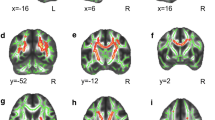Abstract
In vivo nuclear magnetic resonance spectroscopy permits the non-invasive examination of metabolic characteristics of the human brain in a clinical environment. Methods to detect elevated phenylalanine (Phe) in patients with phenylketonuria (PKU) using difference spectroscopy and to estimate absolute brain Phe concentrations, [Phe]brain, have been developed. In patients with classical PKU, [Phe]brain typically varied between 0.14 and 0.78 mmol/l depending upon actual blood Phe concentrations, [Phe]blood, between 0.47 and 2.30 mmol/l. Dynamic investigations can be used to extract information about Phe transport at the human blood-brain barrier, which may be described by a symmetric Michaelis-Menten model. Carrier saturation and competitive inhibition of the influx of other large neutral amino acids can be expected at blood levels usually found in PKU patients. In single cases of untreated, normal intelligent patients, abnormally low [Phe]brain ≤ 0.15 mmol/l were observed despite high stationary Phe levels ([Phe]blood=1.15 ± 0.10 mmol/l).
Conclusion Significant variations in phenylalanine transport parameters in untreated, normal intelligent patients indicated that blood-brain barrier transport or intracerebral phenylalanine consumption are causative factors for the individual vulnerability to phenylketonuria.
Similar content being viewed by others
Author information
Authors and Affiliations
Rights and permissions
About this article
Cite this article
Möller, H., Ullrich, K. & Weglage, J. In vivo proton magnetic resonance spectroscopy in phenylketonuria. Eur J Pediatr 159 (Suppl 2), S121–S125 (2000). https://doi.org/10.1007/PL00014374
Issue Date:
DOI: https://doi.org/10.1007/PL00014374
- Key words Blood-brain barrier
- Nuclear magnetic resonance spectroscopy
- Phenylalanine transport
- Phenylalanine turnover
- Phenylketonuria
- AbbreviationsBBB blood-brain barrier
- Cr creatine
- NMR nuclear magnetic resonance
- Phe phenylalanine
- [Phe]blood blood Phe concentration
- [Phe]brain intracerebral Phe concentration
- PKU phenylketonuria
- PRESS point resolved spectroscopy
- STEAM stimulated echo acquisition mode
- T2 app apparent spin-spin relaxation time
- TE echo time
- VOI volume-of-interest




